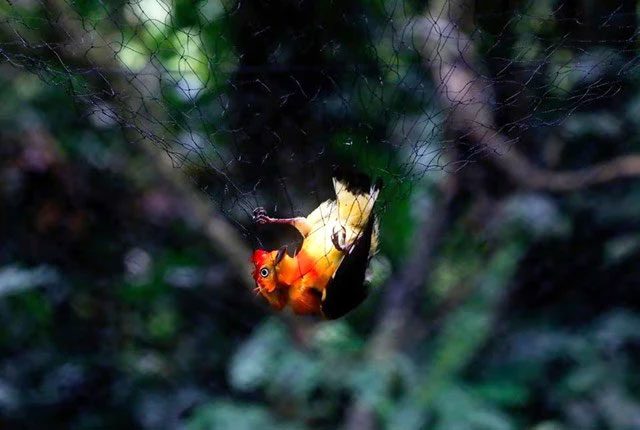Tropical bird species, from kingfishers and tanagers to warblers, are showing signs of mercury pollution as artisanal and small-scale gold mining operations push deeper into the jungles.

Birds living in artisanal gold mining areas have been found to have high mercury levels. (Photo illustration: Reuters).
According to a study published on November 2 in the journal Ecotoxology, birds living within a 7km radius of artisanal gold mining areas were found to have mercury levels more than four times higher than those living in other locations throughout Central and South America.
The lead author of the study, Chris Sayers, a conservation biologist at the University of California, Los Angeles, stated: “This is a wake-up call for global bird conservation in tropical regions.”
Tropical bird biodiversity has declined in recent decades, but scientists are not entirely sure of the causes.
Over 17 years, from 2006 to 2023, dozens of scientists collected thousands of feather, blood, and tissue samples from 322 bird species across nine countries in Central and South America and the West Indies, creating the largest database to date on mercury levels in birds. This research adds to the growing understanding of how mercury—used by gold miners to separate precious metals from sediments—affects wildlife in tropical regions.
Artisanal gold mining is often conducted illegally in protected areas or just outside of reserves. The absorption or ingestion of mercury-contaminated water or food can cause neurological diseases, immune disorders, and reproductive failures in humans and some bird species.
Samples collected indicate that predatory birds or those living in aquatic environments have the highest mercury levels. Hotspots of mercury pollution include Madre de Dios in Peru and Ayapel in Colombia—key centers for artisanal gold mining.


















































